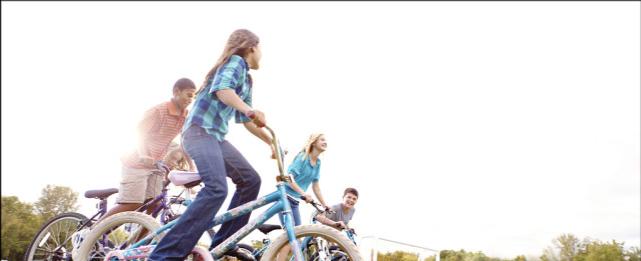It's normal for teens to want new experiences – although you may be stressed as a parent.
Teens need to explore their limits and abilities, as well as the boundaries you set. They also need a person's identity to express themselves. It's all part of their path to becoming independent young people and owning their own identities.
In addition, the adolescent brain part of processing planning and impulse control does not fully mature until around the age of 25. This means that teens are sometimes more likely than adults to make quick decisions without always considering the consequences.
Sometimes, teens make decisions about things that may be risky to adapt to a group.

Common risky behaviors
It is normal for you to worry about the following risky behaviors:
Unprotected sexual activity
Other dangerous uses of texting and social media
Smoking, alcoholism and alcoholism
Illegal substance use
Dangerous driving
Illegal activities, such as unauthorized intrusion or vandalism
struggle
play truant.
Teens' interest in new experiences and thrill-seeking may include fewer risk-taking behaviors, such as trying new tricks in a skate park. This risk-taking behavior peaks around the age of 15-16 and gradually wanes in early adulthood.
Encourage safe adventures
Teens need to take some risks to bring more knowledge of themselves and test their abilities. This means that wrapping them in cotton can be counterproductive.
If your child loves thrill-seeking and adventurous, try directing this energy into safe and constructive activities such as rock climbing, martial arts, canoeing, or mountain biking. Some teens may find that they like the "rush" of a theatrical or creative arts performance.
Another strategy is to give the child autonomy and independence in some ways so that she can explore her own freedom without rebellion.
If your child chooses blue hair or wears worn-out clothing, you may not like it, but these are safe ways to experiment. For more information, read our article on Transferring Responsibility to Your Child.
How to keep adventurous teens safe
Knowing that teen testing limits doesn't make risk-taking behavior more bearable. Here are some ideas to help your child think about the consequences and stay safe.
Talk about behaviors and consequences
Talking about behaviors and consequences can help your child learn to calculate how much risk is involved in different situations. But be careful that it doesn't give a vitriolous impression, as it may encourage your child to rebel. For example, you might say, 'Sometimes it's really hard to say no to drugs.' But you know how bad they are for your health and other aspects of your life. I really want you to stay strong. ”
Establish agreed rules
If you work with your child on the rules and the consequences of breaking them, your child is more likely to follow the rules. As your child grows, you need to be flexible with the rules and show that he is ready to take on more responsibility.
Talk about values
Knowing what is important to your family will help your child develop a sense of responsibility and personal values. You can support family values by setting good examples in things like drinking, driving, and respecting others.
Keep an eye on your child
Knowing who your child is with and where she is can help protect your child. For example, when you negotiate rules with your child, the rule might be that your child lets you know where she's going, and she calls you if her plans change.
Stay in touch with your child
If you keep in touch with your child during your teenage years and build strong relationships, he may be doing a better job of dealing with stresses such as taking drugs or engaging in sexual activity.
Encourage a wide range of social networks
You may not be able to stop your child from becoming friends with a particular person or group — but you can give her the opportunity to make other friends through sports, church, community, or family activities. If you let your child's friends be welcomed at home, you have a chance to get to know them.
Help your child deal with peer influences if your child is doing risky things
Feel the influence of your peer and you can help him figure out how to opt out without losing credibility. For example, he can tell his friend that smoking can cause him to develop asthma. Or he can't stay outside for a party because he has a big game the next day and needs to get some sleep.
Supports handling of risky behaviors
Adventure is a fairly normal part of adolescence, and most teens don't go to extremes.
If your child occasionally stays outside after a curfew, you may not be too worried. But if he often does things with dangerous consequences — such as drug use, fights, alcoholism, or breaking the law — consider seeking help and support.
If you're concerned that your child's behavior is self-destructive or may be a sign of a deeper problem, ask for help as well.
The best way to get started is to ask your family GP to refer you to a psychologist or other mental health professional.
If you're having trouble talking about risky behaviors with your child, it may be helpful to ask a relative or trusted family friend to bring up the topic. Some teens find it difficult to talk to their parents about sensitive issues like sex and drug use, but they may be willing to talk to others. You can also seek advice from your child's school counselor.